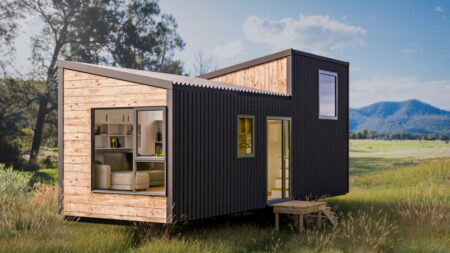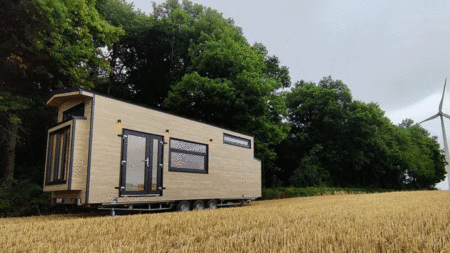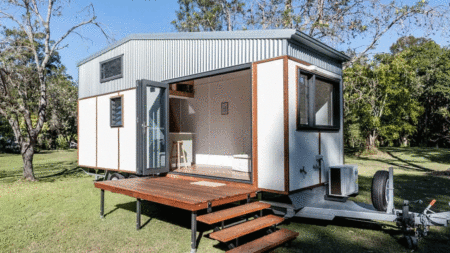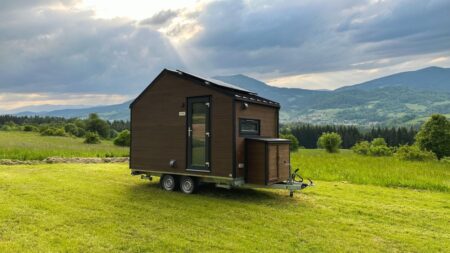Everyone has a dream of building their own house and a house in the woods even more so. Ecuador-based architects Luis Velasco Roldan and Ángel Hevia Antuña make their prototype eco-friendly tiny house. The tiny home is placed in the middle of a forest and is built without harming the surroundings as is evidenced by the tree that pierces the house, or more accurately the house is built around the tree rather than choosing to cut it down.
Furthermore, it has a lot of eco-friendly features. The structure is built with locally sourced eucalyptus wood. It has high strength, low cost, and fast growth, making it a sustainable construction material. Its ventilated exterior wall is built with Ecuador Laurel Wood. The tiny house achieves energy efficiency using natural thermal insulation throughout the external facade. It also features a solar system to generate energy.
There is a green roof, which is made up of two layers of double-geotextile layers and asphalt waterproofing. The green roof is also covered by black soil and humus for vegetation growth.
This tiny house has a 538-square-foot area with a living area, a kitchenette, and a bedroom. There is a staircase that links the ground and a big glass door, which is the entrance to this cozy abode. When you step inside, you find a kitchen area with a dining nook in front of a large glazing. It means you can enjoy the outside beauty while eating. Next lies the living room, which has a spacious sitting space and a picture window.
Adjoining is the open-floor dormitory featuring a bed and a loft-style space above it, which can also be utilized as an additional bed or a sitting area. To make this room energy efficient and bright, there are two clerestory windows and a skylight.
Also Read: 23ft Weekender Tiny House Comes With Minimalist Interiors, Optional Deck
A small walkway from the dormitory takes you to the bathroom, which is on the left side of the kitchen. It has a big mirror, sink, and enough storage. This area also has another door.
This prototype tiny house has been designed to deconstruct so that it can be transported and displayed in different climate regions of Ecuador. We find this eco-friendly tiny house interesting. What is your opinion?







Via: ArchDaily
Follow Homecrux on Google News!




